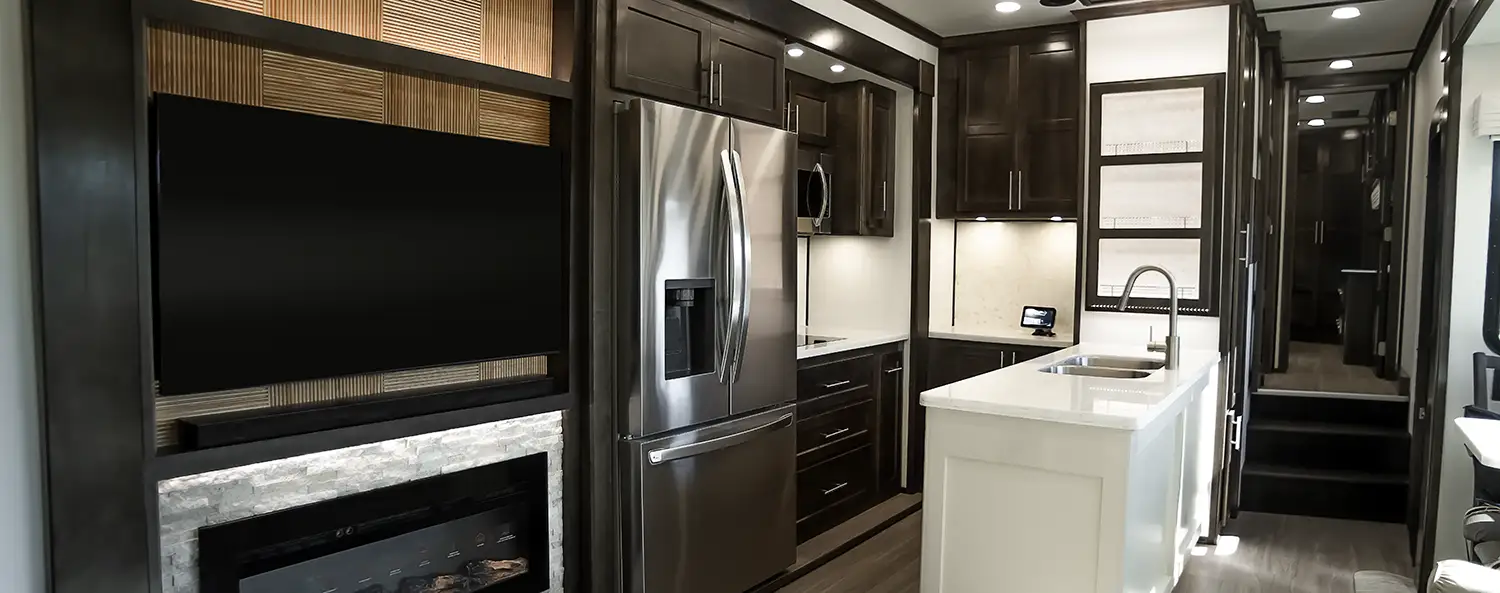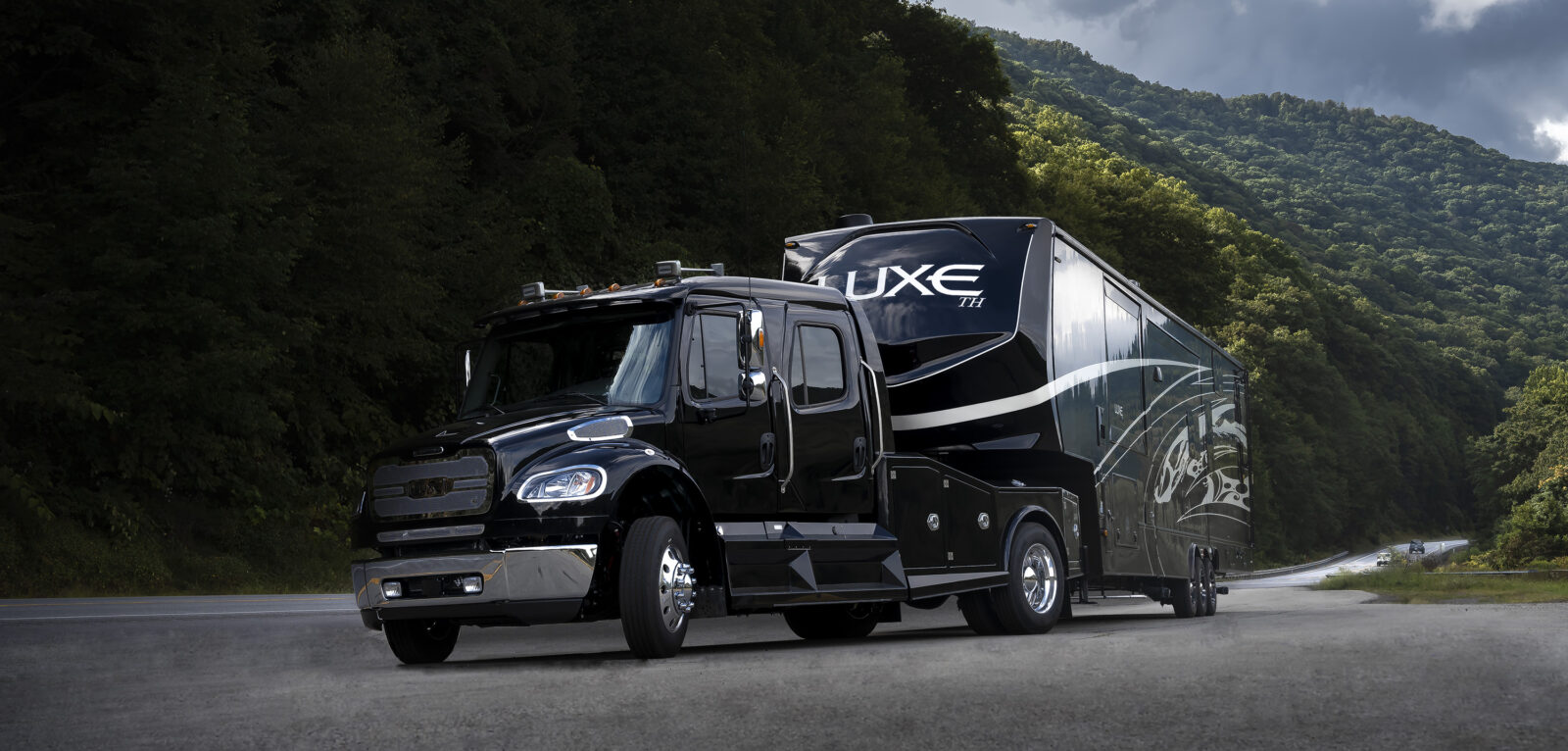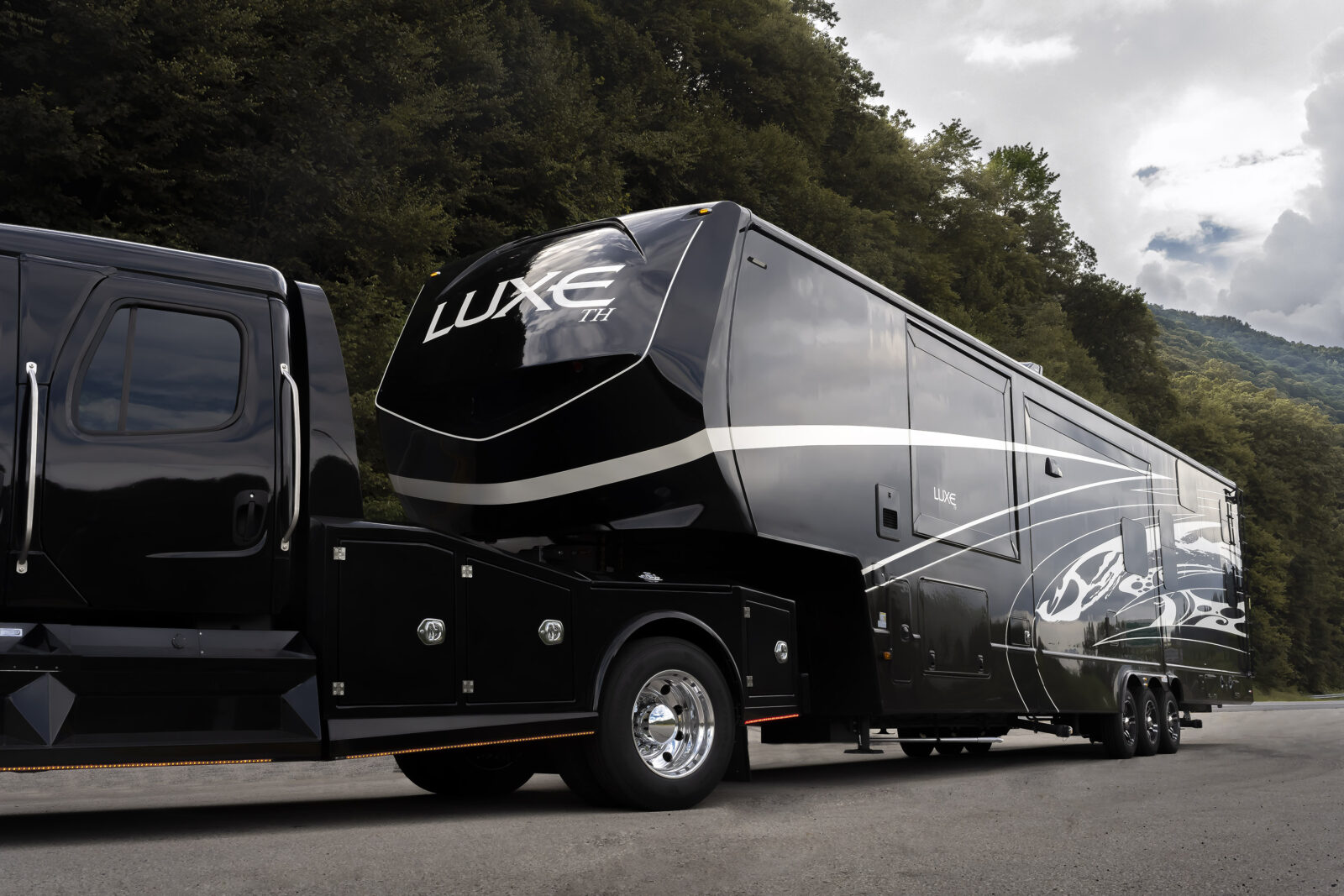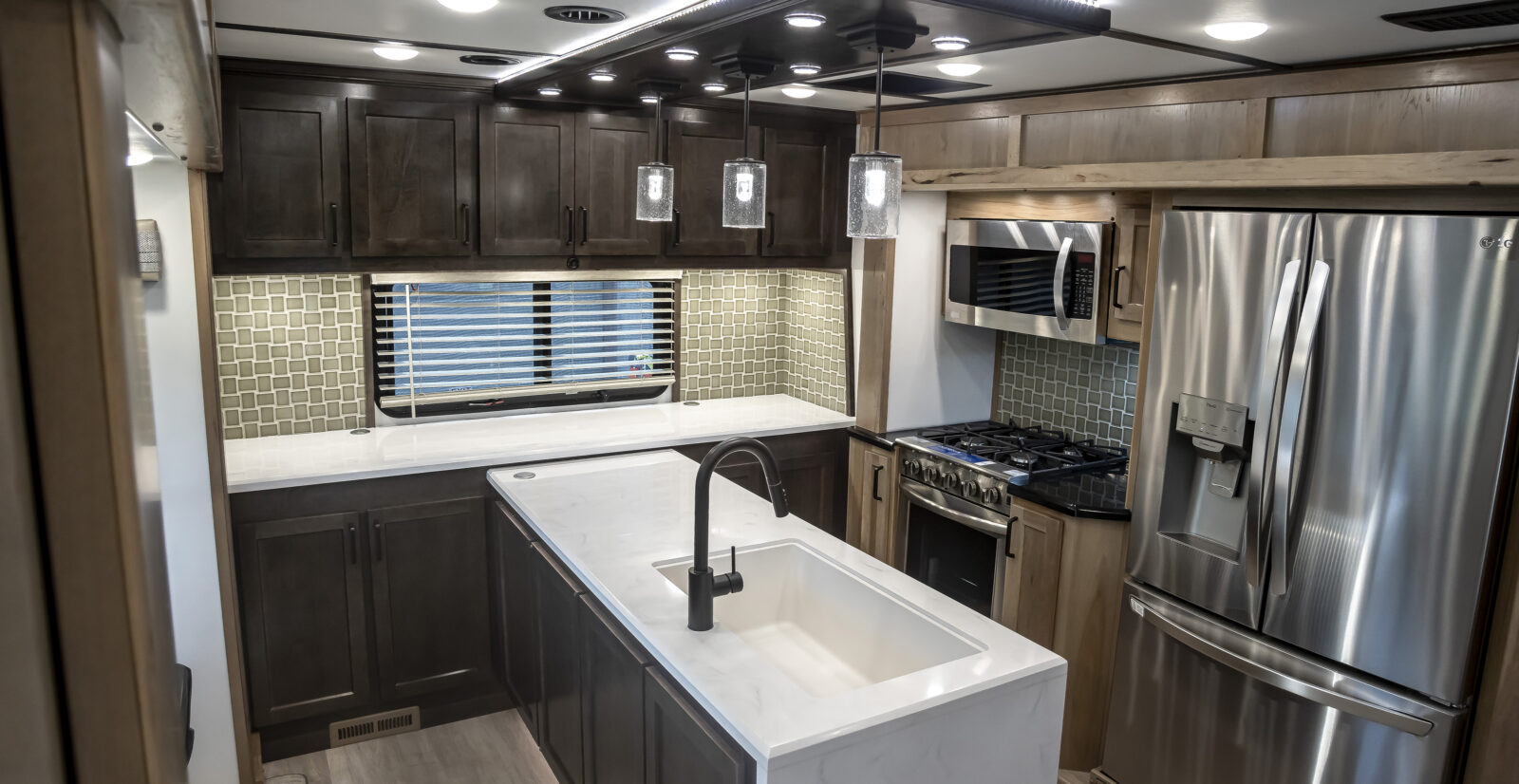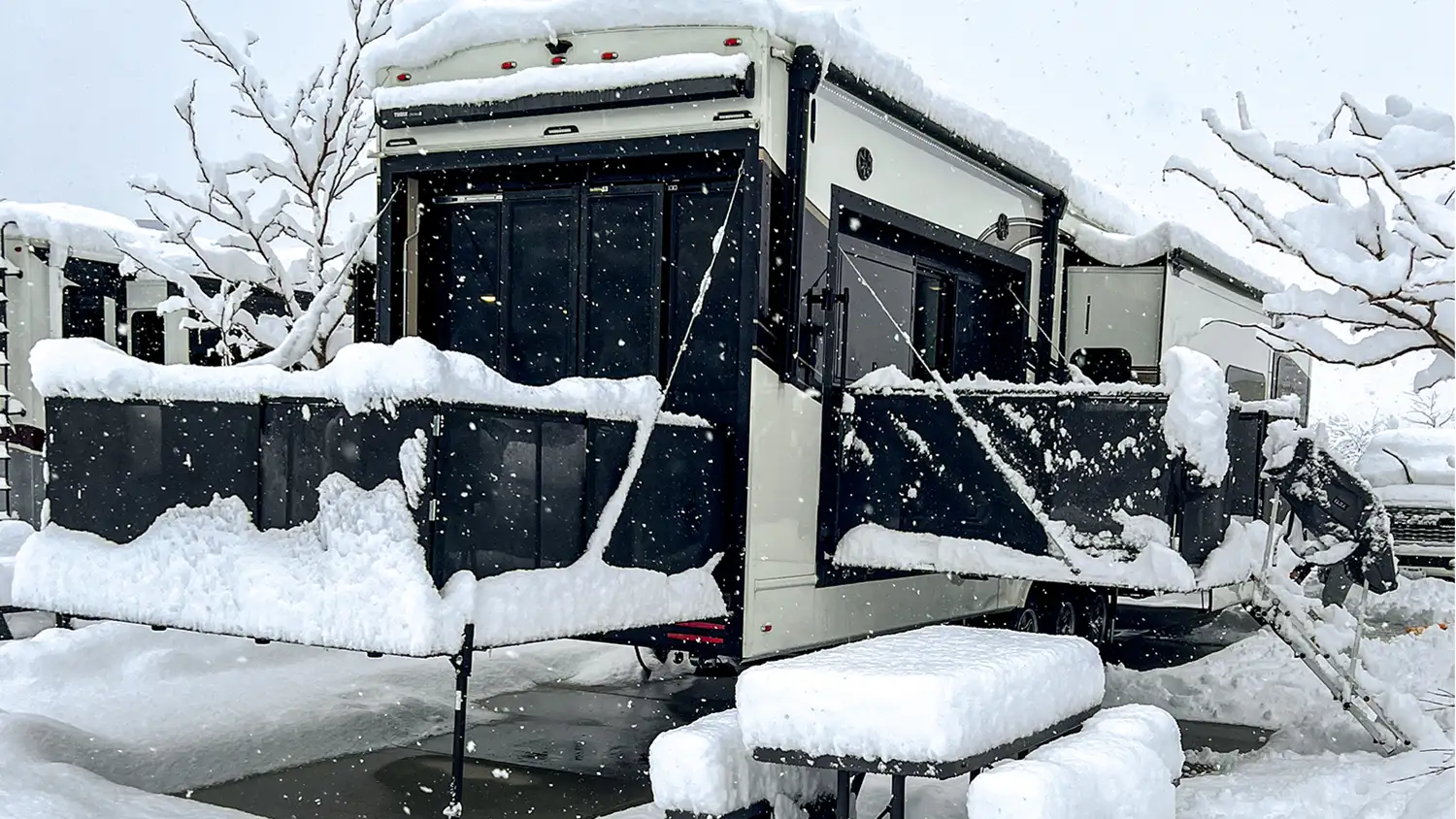If you’re exploring the world of RV travel, you’ve likely come across the term fifth wheel RV. These spacious, towable campers are among the most popular choices for travelers seeking comfort, flexibility, and long-term livability on the road. But before investing in one, it’s important to understand what makes a fifth wheel unique—and what factors to consider before making your purchase.
What Is a Fifth Wheel RV?
A fifth wheel RV is a type of towable recreational vehicle designed to connect directly to the bed of a pickup truck using a special fifth wheel hitch, rather than a traditional bumper hitch. The term “fifth wheel” actually originates from the coupling device once used on horse-drawn carriages—today, it refers to the large circular hitch mechanism mounted in the bed of a truck that secures the RV at a central pivot point.
This gooseneck-style connection provides exceptional stability, maneuverability, and weight distribution, allowing drivers to tow large, heavy trailers with greater ease and safety. Because the hitch sits over the truck’s rear axle (rather than behind it), the setup reduces sway, improves turning radius, and offers a more balanced ride compared to traditional travel trailers.
Fifth wheels are also known for their distinct two-level floorplan. The raised forward section—positioned over the truck bed—typically houses a private master bedroom or loft area, separating it from the main living space. This split-level design creates a sense of spaciousness rarely found in other towable RVs. Many fifth wheels include residential-style amenities such as full-size kitchens, walk-in closets, large bathrooms, washer/dryer hookups, and entertainment centers, making them one of the most luxurious and livable RV types available.
Because of their design and construction, fifth wheel RVs are especially popular among full-time RVers and long-term travelers. They provide the comfort of home while still allowing the flexibility to unhitch and use your truck independently once parked. This makes them a favorite for those seeking extended adventures, snowbird lifestyles, or seasonal living at campgrounds and resorts.
In short, a fifth wheel RV combines the spacious feel of a motorhome with the flexibility of a towable trailer, offering a perfect balance between comfort, capability, and convenience.
Advantages of a Fifth Wheel RV Over Other RV Types
- Spacious interiors: Fifth wheel RVs often provide the most square footage of any towable RV, with tall ceilings, residential-style kitchens, and multiple slide-outs.
- Improved towing stability: The hitch point in the truck bed centers the trailer’s weight, reducing sway.
- Better separation of spaces: Many fifth wheel RVs feature private bedrooms, living rooms, and even dedicated office or bunk spaces.
- Abundant storage: Ample underbelly and overhead compartments.
- Luxury amenities: From fireplaces to washer/dryer prep, fifth wheels offer a home-like experience.
Popular Fifth Wheel RV Floorplan Arrangements
Fifth wheel RVs offer a diverse range of floorplans to suit various lifestyles and travel needs. The distinct split-level design allows for creative and functional layouts. Here are some of the popular arrangements:
Standard Front Bedroom/Rear Living Fifth Wheel
This is one of the most common configurations, featuring:
- Front Section: A private master bedroom (often with a queen or king bed) and a bathroom located over the truck bed.
- Main Living Area: A spacious living room at the rear of the RV, typically with large windows, recliners, a sofa, and an entertainment center.
- Mid-Kitchen/Dining: A well-equipped kitchen and dining area situated in the middle of the RV, separating the bedroom from the living space.
Front Living Fifth Wheel
In this arrangement, the primary living space is located in the raised front section:
- Front Section: A large, often elevated, living room with multiple sofas, recliners, and an entertainment system, providing a panoramic view.
- Mid-Kitchen/Dining: The kitchen and dining area are typically found in the middle.
- Rear Bedroom/Bathroom: The master bedroom and bathroom are usually located at the very rear of the RV, offering more privacy.
Rear Kitchen Fifth Wheel
This floorplan maximizes living space by placing the kitchen at the back:
- Rear Section: A comprehensive kitchen with extensive counter space, ample storage, and often a large window.
- Mid-Living/Dining: The living and dining areas are centrally located.
- Front Bedroom/Bathroom: The master bedroom and bathroom remain in the raised front section.
Rear Bedroom Fifth Wheel
Designed for those who prioritize a spacious and private sleeping area:
- Rear Section: A dedicated master bedroom, often with generous storage, a large bed, and sometimes an ensuite bathroom.
- Mid-Living/Kitchen: The living and kitchen areas are typically in the middle.
- Front Bathroom/Storage: The front section might house an additional bathroom or extra storage.
“2 Bedroom 2 Bath”
This luxurious and family-friendly floorplan is gaining popularity for its ability to accommodate larger groups or provide separate living quarters:
- Master Suite: A primary bedroom, often in the front raised section, with a dedicated ensuite bathroom.
- Second Bedroom: An additional private bedroom, which can be located in various parts of the RV (e.g., mid-bunkhouse, rear, or even a loft), complete with its own bed(s) and storage.
- Second Bathroom: A second full or half bathroom strategically placed for access by occupants of the second bedroom or guests, providing convenience and privacy. This layout is ideal for full-time living with children, guests, or for those who need a dedicated office space that can double as a guest room.
Fifth Wheel Toy Haulers
These specialized fifth wheels are designed for adventurers who want to bring their “toys” (ATVs, motorcycles, kayaks, etc.) along for the ride:
- Garage Area: A dedicated rear garage space with a ramp door for loading and unloading vehicles. This area often converts into additional living space once the toys are removed, featuring “happy-jack” beds, sofas, or dining tables.
- Mid-Living/Kitchen: The main living and kitchen areas are typically located forward of the garage.
- Front Bedroom/Bathroom: The master bedroom and main bathroom are usually in the raised front section.
- Half Bath in Garage: Many toy haulers include a half bathroom or a full bathroom within or adjacent to the garage area, providing convenience when outdoor activities are the focus.
- Toy haulers manufactured by Luxe offer customized garage are as flex space. Luxe customizes toy hauler RVs with flexible garages for ATVs, kayaks, remote work, or mobile businesses, ensuring each meets unique owner needs for adaptable living and adventure.
Each floorplan offers distinct advantages, and the best choice depends on individual needs, the number of travelers, and the intended use of the RV.
How to Choose the Right Truck to Tow a Fifth Wheel RV
Your tow vehicle is as crucial as the RV itself. Match the truck’s towing and payload capacities to your fifth wheel’s Gross Vehicle Weight Rating (GVWR).
- SRW (Single Rear Wheel) trucks handle lighter fifth wheels.
- DRW (Dual Rear Wheel) or “dually” trucks offer greater stability for large, luxury RVs.
Always verify your truck’s payload, rear axle weight rating, and pin weight compatibility before towing.
Another thing to note is that manufacturers’ published weights are based on base weight without options. Options can add thousands of pounds to the final built out UVW(Unloaded Vehicle Weight)of the Fifth Wheel, therefore it is important to read the fine print and disclaimers on a trailer maker’s literature. You should always look at the Weight sticker on the side of the actual unit as a truer reference. A word of caution even on the data sticker is that some manufacturers calculate this weight and may vary. In the case where the payload capacity is close, it is best to take it to a scale and weigh it. Scales are available at most truck stops.
Understanding Fifth Wheel Hitch Options
Truck Hitch Types
- Standard Hitch: Basic and affordable, ideal for light or infrequent towing.
- Hitch with Rubber Dampeners: Reduces vibration and metal-on-metal impact.
- Air Ride Hitch (Best): Offers superior shock absorption and a smoother ride.
Trailer Hitch Pin Types
- Standard King Pin-Basic: Common on most fifth wheels.
- Rubber dampener (MorRyde0-Good: Minimizes metal on metal contact.
- Rubber-Torsion Pin Box (Gen-Y,)-Best: Minimizes stress and protects the RV frame.
Suspension Systems Explained
- Kelderman Air Ride – Best: Premium comfort and load-leveling for full-timers.
- Independent MorRyde – Better: Each wheel moves independently for reduced vibration.
- Torsion Axle Independent – Good: Mid-range comfort and flexibility.
- Leaf Spring Suspension – Basic: Budget-friendly but offers a rougher ride.
Construction Quality and Key Components
- Frame: Look for thick steel I-beams or aluminum framing for strength.
- Exterior Walls: Laminated fiberglass with closed-cell foam insulation provides the best longevity.
- Insulation: Choose higher R-values for four-season comfort.
- Brakes & Axles: Electric-over-hydraulic disc brakes and 8k–9k axles offer superior safety.
- Tires: Commercial-grade, J-rated tires enhance durability and stability.
How to tow a fifth wheel RV safely
Towing a fifth wheel RV requires attention to detail and adherence to safety protocols to ensure a smooth and secure journey.
- Perform Pre-Trip Inspections:
- Tires: Check tire pressure on both the truck and the RV. Ensure tires are in good condition with adequate tread depth.
- Lights and Brakes: Verify all lights (running, brake, turn signals) are working on both the truck and RV. Test the RV’s brakes and the brake controller.
- Hitch Connection: Double-check that the fifth wheel hitch is properly secured and locked, and that the safety chains are correctly attached.
- Breakaway Cable: Ensure the breakaway cable is connected to the truck but not to the safety chains, so it will activate the RV brakes if the RV detaches.
- Cargo: Secure all interior and exterior cargo in the RV to prevent shifting during transit. Distribute weight evenly.
- Understand Weight Limits:
- GVWR (Gross Vehicle Weight Rating): Never exceed the GVWR of your fifth wheel or your truck.
- GCWR (Gross Combined Weight Rating): Do not exceed the GCWR, which is the maximum allowable weight of the truck and the fully loaded RV.
- Payload Capacity: Be aware of your truck’s payload capacity, as the fifth wheel’s kingpin weight counts towards this.
- Driving Techniques:
- Slower Speeds: Drive at a reduced speed, especially on highways and in adverse weather conditions.
- Increased Braking Distance: Account for significantly longer braking distances due to the added weight of the RV.
- Wider Turns: Make wider turns to avoid clipping curbs or other obstacles with the RV.
- Lane Changes: Plan lane changes well in advance and use your mirrors frequently to monitor the RV.
- Wind and Weather: Be extra cautious in strong winds, rain, or snow, as these can severely impact stability and handling.
- Hills: Use a lower gear when going uphill to maintain power and downhill to control speed and prevent brake fade.
- Parking and Maneuvering:
- Spotter: Always use a spotter when backing up or maneuvering in tight spaces.
- Practice: Practice turning and backing up in an empty lot before heading out on your trip.
By following these guidelines, you can significantly enhance the safety of towing your fifth wheel RV.
Lifestyle and Usage Checklist
Before selecting your fifth wheel RV, use this checklist to match your lifestyle, travel habits, and comfort expectations.
1. Lifestyle & Usage: Define Your Needs
How often will you use your fifth wheel?
☐ Occasionally or Seasonally:
Choose a reliable mass-market fifth wheel with standard features and lighter construction.
☐ Full-Time Parked:
Prioritize residential comfort, high insulation values, and four-season capability for resort living.
☐ Full-Time Traveling:
Invest in robust framing, air-ride hitches, and premium suspension to protect your RV and improve ride quality.
What climates will you be in?
☐ Extreme Hot or Cold: Four-season insulation, dual-pane windows, and heated underbellies are essential.
☐ Southwest / High UV: Choose UV-resistant exteriors, insulated roofing, and fade-resistant interior materials.
☐ Temperate: Standard insulation and traditional build materials are sufficient.
2. Truck & Towing Compatibility
Truck Type
☐ Single Rear Wheel (SRW): Ideal for lightweight fifth wheels.
☐ Dual Rear Wheel (DRW/Dually): Best for heavy, luxury, or full-time RVs.
Weight Compatibility
☐ Truck’s towing capacity exceeds the RV’s GVWR (Gross Vehicle Weight Rating).
☐ You’ve checked the actual weight sticker (not brochure) — options can add hundreds or thousands of pounds.
☐ RV’s pin weight does not exceed your truck’s payload or rear axle rating.
3. Floorplan Selection
☐ Front Bedroom / Rear Living: Most common layout; great separation of space.
☐ Front Living: Elevated living room for entertainment; bedroom at the rear.
☐ Rear Kitchen: Maximizes counter space; ideal for foodies.
☐ Rear Bedroom: Spacious, private sleeping area.
☐ Two Bedroom / Two Bath: Perfect for families or guests.
☐ Toy Hauler: Rear garage area for ATVs, motorcycles, or extra storage.
4. Construction & Components
Hitches & Suspension (Ride Quality)
Suspension Options:
☐ Best: Kelderman Air Ride with shocks
☐ Better: MorRyde Independent
☐ Good: Dexter Torflex torsion axle
☐ Basic: Leaf spring (budget-friendly, rougher ride)
Hitch Pin (on Trailer):
☐ Best: Gen-Y Rubber Torsion
☐ Better: MorRyde Rubber Dampener
☐ Basic: Standard Lippert Steel
Hitch (in Truck):
☐ Best: Air Ride Hitch
☐ Better: Hitch with Rubber Dampeners
☐ Basic: Standard Steel Hitch
Frame & Structure (Durability)
Frame Construction:
☐ Best: 14″ I-beam reinforced with 2″ tube (drop frame)
☐ Good: 12″ I-beam frame
☐ Basic: 10″ light I-beam frame
Sidewalls:
☐ Best: 3″ laminated vacuum-bag with closed-cell foam
☐ Good: 2″ laminated pinch-rolled
☐ Basic: 1.5″ pinch-rolled
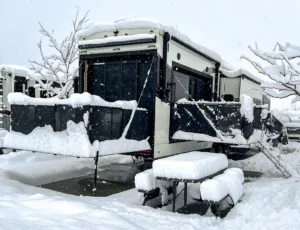
Luxe 5th Wheel Toy Hauler insulation keeps this RV warm during a blizzard.
Roof Construction:
☐ Best: Welded aluminum trusses with thick plywood decking
☐ Good: Flexible aluminum truss with OSB decking
☐ Basic: Wood truss (stapled, prone to water absorption)
Floor Construction:
☐ Best: Laminated aluminum frame floor with closed-cell foam and plywood
☐ Good: Welded aluminum 3″ floor with fiberglass insulation
☐ Basic: Wood floor with fiberglass and OSB decking
Running Gear (Safety & Performance)
Brakes:
☐ Best: Electric-over-hydraulic disc brakes
☐ Good: Electric disc brakes
☐ Basic: Drum brakes
Axles:
☐ 9,000 lb
☐ 8,000 lb
☐ 7,000 lb
☐ 6,000 lb (standard on entry-level models)
Tires:
☐ Best: Continental Commercial J-rated (75 mph)
☐ Good: H-load rated
☐ Basic: E-load rated trailer tires
Insulation
Insulation Type:
☐ Best: Graphite-infused closed-cell foam
☐ Good: White bead board open-cell foam
☐ Basic: Fiberglass batt insulation (least efficient)

Mass Market vs Custom Fifth Wheel RV Manufacturers
Mass-market models are widely available through dealerships and built to accommodate SRW trucks using lightweight materials. However, custom fifth wheel RVs, such as those from Luxe, are handcrafted using high-quality hardwoods, reinforced steel frames, and premium insulation.
For those planning to live full-time or travel extensively, the difference in build quality, comfort, and longevity makes the custom route well worth the investment.
Final Thoughts: Finding the Perfect Fifth Wheel RV for You
Choosing a fifth wheel RV comes down to understanding your lifestyle, travel habits, and comfort priorities. Whether you’re taking weekend trips or embracing full-time RV living, matching your fifth wheel’s construction, suspension, and features to your needs ensures years of safe, enjoyable travel.
